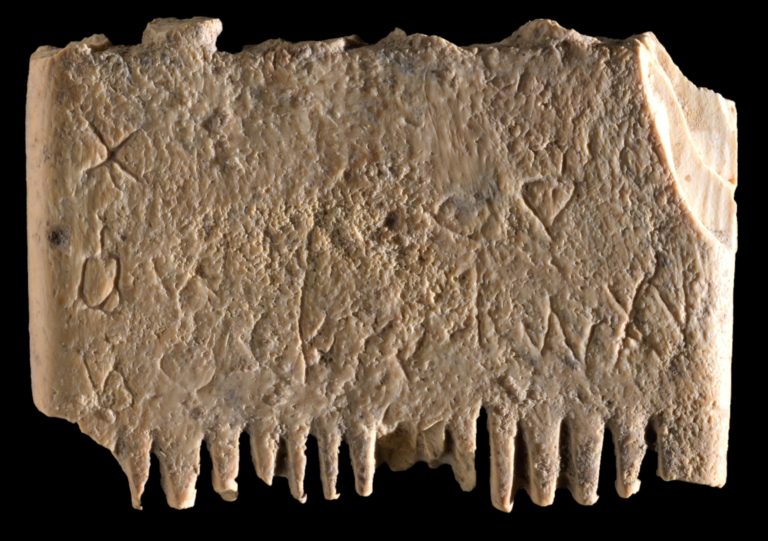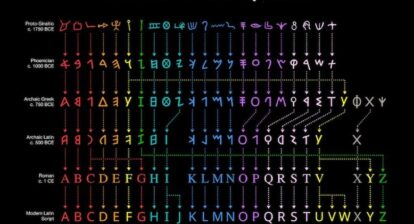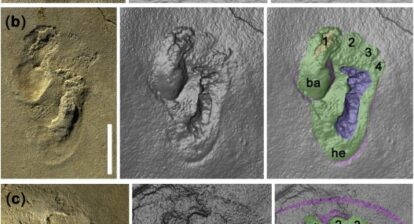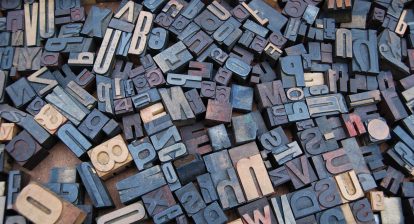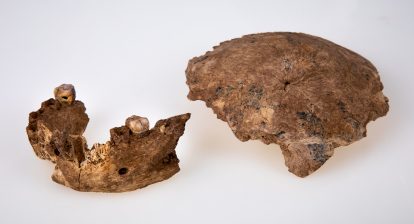Researchers have discovered an inscription on an ancient ivory comb that they claim to be the oldest sentence in the world’s first alphabet – one that would subsequently become the letters of the alphabet in English and other languages.
Although the fine toothed ivory comb was found some years ago (2017) in Tel Lachish, an old Canaanite city in the foothills of central Israel, it is only recently that the inscription containing around 17 words was discovered. The comb was used to get rid of lice and nits because the inscription says: “ytš ḥṭ ḏ lqml śʿ[r w]zqt”, meaning “May this tusk root out the lice of the hai[r and the] beard”, thought to have written around 1700 BC. And this is the first complete and reliable sentence that scientists have found in the ancient Canaanite language that gave rise to the Phoenician alphabet and eventually to alphabets used all over the world, including English.
The alphabet started with Egypt in around 2700 BC, when Egyptian writing already had 22 hieroglyphs to represent syllables with a single consonant of their language and a vowel (or no vowel) supplied by the native speaker. By 1700 BC, a script started being developed in central Egypt by — or perhaps for — Semitic workers. It is thought that this was based on Egyptian hieroglyphs.
Research from January 2021 says that Canaanite miners in the Sinai — unversed in hieroglyphs & unable to speak Egyptian, were inspired by the pictorial writing they saw. They started transforming a hieroglyph into a letter — other letters were drawn from life, until they could represent their entire language in written form. In the Wadi el Hol (or ‘Terrible valley’), a cliff face depicts graffiti written by non-native Egyptian speakers, again taking elements of Egyptian writing, and adapting them to sounds in their own language. The hieroglyph for ox is aleph and this became the letter ‘a’ by just using the first character. The hieroglyph for house is bet and this gave the letter ‘b’. If you put aleph and bet together, what do you get? Alphabet.
There have been other examples of words in this ancient Canaanite language, none have depicted a meaningful sentence before.
“The ivory comb is small, measuring roughly 3.5 by 2.5 cm. The comb has teeth on both sides. Although their bases are still visible, the comb teeth themselves were broken in antiquity. The central part of the comb is somewhat eroded, possibly by the pressure of fingers holding the comb during haircare or removal of lice from the head or beard. The side of the comb with six thick teeth was used to untangle knots in the hair, while the other side, with 14 fine teeth, was used to remove lice and their eggs, much like the current-day two-sided lice combs sold in store”, according to a News Release.
“This is the first sentence ever found in the Canaanite language in Israel. There are Canaanites in Ugarit in Syria, but they write in a different script, not the alphabet that is used till today. The Canaanite cities are mentioned in Egyptian documents, the Amarna letters that were written in Akkadian, and in the Hebrew Bible. The comb inscription is direct evidence for the use of the alphabet in daily activities some 3700 years ago. This is a landmark in the history of the human ability to write,” shared Professors Yosef Garfinkel from the Hebrew University of Jerusalem (HU) .

Zoomed in Canaanite Letters on an ancient fine toothed comb discovered in 2017 in Tel Lachish, Israel. Credit: CREDIT: DAFNA GAZIT, ISRAEL ANTIQUITIES AUTHORITY
Furthermore, “Ancient combs were made from wood, bone, or ivory. Ivory was a very expensive material and likely an imported luxury object. As there were no elephants in Canaan during that time period, the comb likely came from nearby Egypt—factors indicating that even people of high social status suffered from lice.” Remains of a head-louse were also found on one of the teeth.

Remains of head louse in Canaanite ivory comb. Credit: Vainstub et al Jerusalem Journal of Archaeology 2022
The inscription itself is important because it fills in some gaps in the understanding of the language and the culture of the area in the Bronze Age.
As per the statement, “For the first time, we have an entire verbal sentence written in the dialect spoken by the Canaanite inhabitants of Lachish, enabling us to compare this language in all its aspects with the other sources for it. Second, the inscription on the comb sheds light on some hitherto poorly attested aspects of the everyday life of the time, haircare and dealing with lice.Third, this is the first discovery in the region of an inscription referring to the purpose of the object on which it was written, as opposed to dedicatory or ownership inscriptions on objects. Further, the engraver’s skill in successfully executing such tiny letters (1–3 mm wide) is a fact that from now on should be taken into account in any attempt to summarize and draw conclusions on literacy in Canaan in the Bronze Age. Lachish was a major Canaanite city state in the second millennium BCE and the second most important city in the Biblical Kingdom of Judah. To date, 10 Canaanite inscriptions have been found in Lachish, more than at any other site in Israel. The city was the major center for the use and preservation of the alphabet during some 600 years, from 1800-1150 BCE. The site of Tel Lachish is under the protection of the Israel Nature and Parks Authority.”
The research was published in the Jerusalem Journal of Archaeology.
